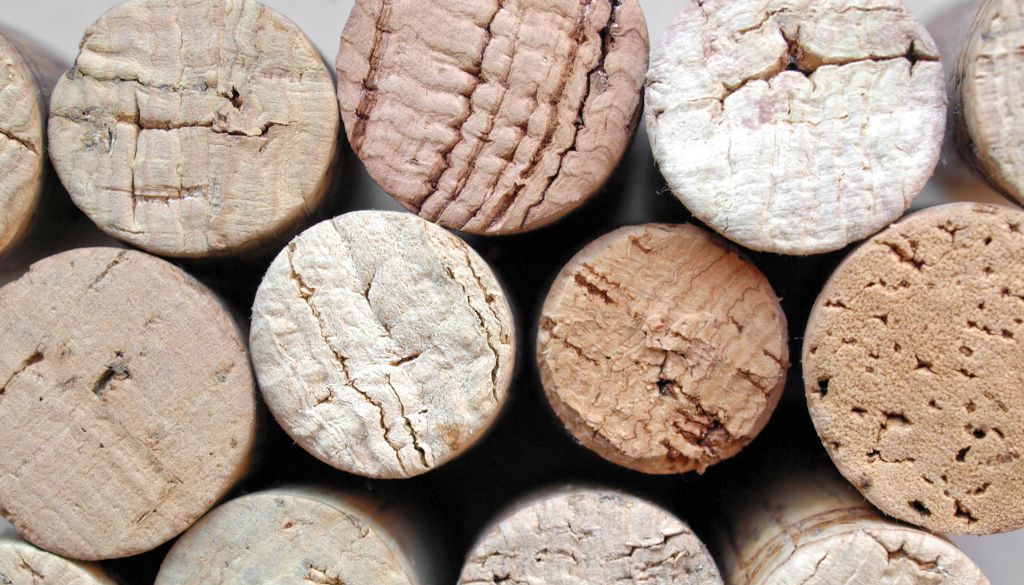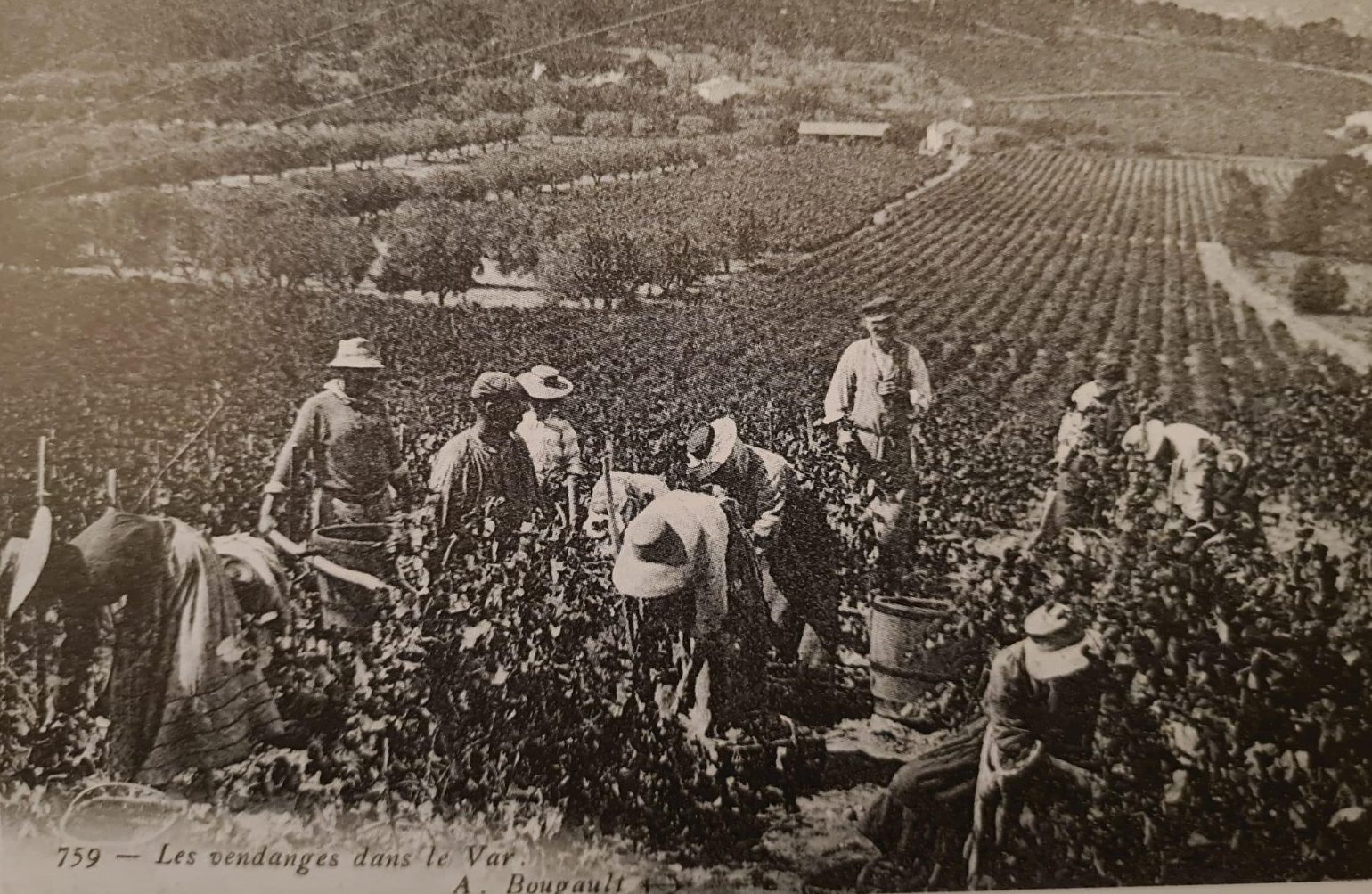All you need to know about the cork,
Corks date back to ancient times, when they were used by the Greeks and Romans to seal amphorae containing wine and oil. However, its modern use in bottles dates back to the 17th century, thanks to the monk Dom Pérignon, who is said to have popularised its use in champagne as a replacement for wooden pegs. Made from the bark of the cork oak tree, which is grown mainly in Portugal and Spain but also in the Gulf of Saint-Tropez, this natural material is prized for its elasticity and impermeability, guaranteeing optimum preservation of wines and spirits. origins of cork
….. 1 – The appearance of corks in historY,
Nature and origin of corks :
Cork is the bark of the cork oak, a tree that grows mainly in Mediterranean regions like ours. It is made up of cells containing suberin, a substance that makes cork waterproof, elastic and resistant to mould.
Around Saint-Tropez, ancestral forests are home to cork oaks that have been cultivated for centuries. These forests are not just an economic resource: they play a crucial ecological role by preserving local biodiversity and combating soil erosion. Portugal and Spain account for 80% of world production, but France, particularly around Saint-Tropez, has historic cork oak forests.
The first bark of a cork oak can be removed after about 25 years of growth. Bark is then harvested every 9 to 12 years, without felling the tree. The cork oak has a thick, spongy bark that regenerates naturally after each harvest.
Before corks were used :
Ancient civilisations, such as the Egyptians and Romans, used clay or wax corks to seal amphorae. Craftsmen also used wooden corks tied with ropes, but their watertightness left much to be desired.
The turning point in 17ᵉ century:
With the rise of bottled wine (around 1630), winemakers sought a more reliable material. It was Dom Pérignon, the famous Benedictine monk, who is said to have introduced cork to seal champagne bottles. His choice was based on the natural properties of cork and its availability in the Mediterranean basin.
Click to see our real Instagram

….. 2 – From the oak to your bottle,
From raw cork to the perfect stopper:
….. 1 – Drying and stabilisation
After harvesting, the bark slabs are left to dry naturally in the open air for 6 months to a year. This drying allows the cork to lose its initial moisture and stabilise its structure.
….. 2 – Cooking and cleaning
The cork sheets are then boiled in large vats of hot water. This stage has two aims: to soften the material to make it easier to process and to remove natural impurities. The heat also helps the cork to regain its original shape and increase its thickness.
….. 3 – Sorting and cutting
The slabs are sorted according to quality and only the most homogeneous and flawless parts are used to make natural corks. These sheets are then cut into strips to prepare for production.
….. 4 – Cap perforation
The manufacture of corks begins with a cylindrical perforation in the cork strips. Each cylinder obtained becomes a raw cork, which is then perfected.
….. 5 – Sanding and calibration
Raw corks are sanded to give them a perfectly cylindrical shape and a smooth surface. They are also calibrated to ensure a uniform size and optimum fit in the bottle neck.
….. 6 – Treatment and finishing
Some corks receive a special treatment to reinforce their watertightness and durability:
Surface treatment: application of paraffin or silicone to facilitate insertion and extraction.
Disinfection: elimination of micro-organisms to prevent defects such as cork taint.
….. 7 – Marking
The corks can be laser-engraved or hot-stamped with the name of the winery, a date or a logo, adding a touch of elegance and personalisation.

Here is an extract translated from the book “Gassin, of Guy Leduc”:
“The cork oak, “lou suve” in Provençal, is one of the emblematic trees of the Maures region. It grows in the Mediterranean region, loves the sun, light, temperate climates and poor limestone soils. That’s why it can be found in this crystalline massif made up of metamorphic rocks, where limestone is totally absent. It can grow to a height of around ten metres, but above all, its gnarled trunk can take on a wide range of colours, from grey in its natural state to wine-red after the bark has been harvested.
The cork oak has fascinated people since prehistoric times. Here’s a tree whose bark can be removed without it dying! It’s even the only plant that can withstand fire with the vine ! And above all, it has multiple properties: lightness, thermal insulation, acoustic insulation and vibration insulation. In short, it’s an extraordinary material that mankind was quick to exploit.
Throughout the ages, it has been used in a wide variety of ways: as essential fishing floats, roofing, shoe soles, all kinds of containers for storing cereals, dried vegetables or salt, beehives for bees and, of course, corks for barrels, amphorae, bottles, pots and other liquid reserves.
le bouchon de liège
La bouchonnerie de La Garde-Freinet
In the 19th century, the cork industry exploded in the Maures region, bringing prosperity to many villages. Cork factories mushroomed, producing corks of all shapes and sizes, which were exported all over the world. The village of La Garde-Freinet devoted itself almost exclusively to this industry, becoming the cork capital.
At its peak in the 1870s, the village had nearly 30 cork factories, ranging from small family businesses to large-scale factories. The industry employed up to 700 men, women and children. This proletariat of French and foreign workers organised themselves, and strikes and struggles for higher wages began to appear.
A real driver of economic development, the butchery industry transformed the farming village into a wealthy industrial town. The village grew, several neighbourhoods were built and the population rose to nearly 3,000.
But remoteness and foreign competition led to a gradual decline from the end of the 19th century”.

Derived from ancestral cork oak forests, the cork stopper undergoes a meticulous process before sealing our bottles. More than just a simple accessory, it is a guarantee of quality, preserving the wine while respecting the environment. The next time you uncork a bottle, remember the exceptional journey of this small natural cylinder, from the heart of the forest to your table.






















